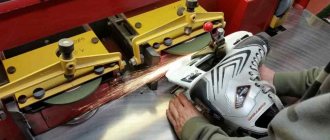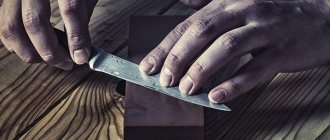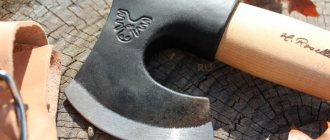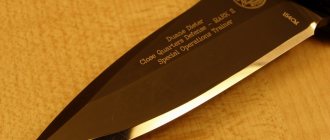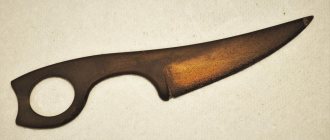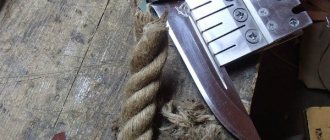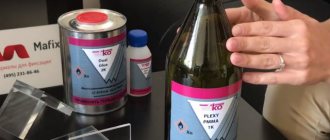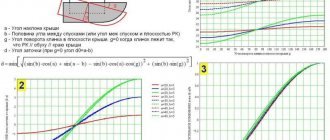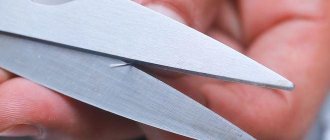Ceramic knives have become a popular tool in the home kitchen. The ability to sharpen ceramic knives at home has become an important factor in the popularity of this lightweight and durable tool. They can be used to carefully and quickly cut even finicky foods into thin slices. This is due to the material from which the blade is made. A more accurate name would be a metal-ceramic blade. Zirconium dioxide is pressed and sintered at a temperature of 1500 degrees using a special technology. Production and material are high-cost, so a high-quality tool cannot be cheap.
Features of ceramic knives
Ceramic knives are a very convenient home tool that has many advantages. These include: light weight, resistance of the material from which such a product is made to rust, the ability to process any products using such a blade without fear that the smell from them will remain on the knife. Those people who have been using such tools for a relatively long time note that they can be used to teach children the basics of cooking, since such knives are more convenient and safe than their metal counterparts.
However, ceramic kitchen utensils also have their disadvantages. These include the fragility of such tools, the associated fragility, as well as the inability to use such knives for cutting large products, for example, watermelon, since a ceramic blade longer than 18 cm is not made. It should also be noted that such a blade cannot be bent, used to open canned food, or used to chop food on glass boards.
Sharpening ceramic knives is particularly difficult. If it is carried out incorrectly, the owner can easily damage the blade, which cannot be restored in the future. Fortunately, today there are many devices with which you can sharpen a ceramic knife at home.
Nuances of care and operation
To ensure that your knives last as long as possible and do not become dull, you need to adhere to the following recommendations:
- Do not cut extremely hard foods such as bones or frozen meat.
- When slicing, perform smooth, even movements as even as possible.
- Use a cutting board made of wood.
- Do not hit the working area with the tip of the device.
- It is not recommended to scrape vegetables and fruits.
- It is important to wash the product by hand in warm water; the dishwasher is not suitable for ceramics.
- Try not to drop the tool.
- Avoid sudden temperature changes.
- Store separately from kitchen utensils made of metal.
Ceramic knives require special care. True, even with careful treatment of them, sometimes there is a need for sharpening. You can perform this procedure yourself. To do this, you just need to choose the right knife and strictly follow the instructions.
Do not use a ceramic knife to cut bones or frozen meat.
It is advisable to use a cutting board made of wood
It is not recommended to scrape vegetables and fruits
Knives with ceramic blades should be stored separately from kitchen utensils made of metal.
How often should ceramic knives be sharpened?
Regular steel knives have to be sharpened several times a year. Do ceramic products need to be sharpened as often? Practice shows that these samples hold the cutting edge significantly longer. If they are sharpened correctly, they can be used without additional processing for a year.
Important:
If you carefully use a ceramic product, you can do without sharpening it for several years. But over time, the product will still lose its sharpness, and you will need to choose a tool to sharpen it.
How can you sharpen such knives?
Not all sharpeners are suitable for working at home with ceramic knives. Manufacturers of such products recommend using diamond-coated tools to care for such blades. In particular, to sharpen such knives you can use:
- Diamond paste.
- Special sharpeners designed for processing ceramics. Now these are produced in both Asian and European countries. Asian analogues, as a rule, have a fairly narrow sharpening line and process the knife on one side at an angle of 5 degrees. European analogues are wider and cut the blade at an angle of 20 degrees.
- Electric sharpener with a diamond wheel.
Video: how to sharpen a ceramic knife at home?
Important:
Under no circumstances should you try to sharpen such products with ordinary sandpaper, sharpeners for metal knives that do not have diamond coating, or other similar improvised means. All this can lead to damage to your instrument. In the future, even experienced craftsmen working with special equipment will not be able to restore a ceramic blade processed in this way.
Features of correct sharpening of the product
Zirconium dioxide in powder form is used to make kitchen utensils. It is pressed and then subjected to prolonged firing under high temperatures. As a result, it is possible to obtain a very sharp blade with excellent characteristics.
If a knife no longer copes with its task or cuts food poorly, then you need to sharpen it. It is best to contact a specialist for this purpose, however, his services will not be the cheapest. For this reason, people often wonder whether it is possible to sharpen ceramic knives at home. It is quite possible to perform such actions yourself, but this will require certain tools and skills. Not every sharpening unit is suitable for this.
Before performing basic manipulations, you need to carefully inspect the blade. It is extremely important to determine whether it is sharpened on one or both sides. If you start processing a knife with a one-sided bevel on both sides, it will turn out to be hopelessly damaged. You only need to sharpen it on one side. This procedure is performed until a burr forms on the edge. After this, it remains to rub the abrasive a couple more times.
If the blade is wedge-shaped, it is processed on both sides until a burr appears. Then the final stage of grinding is performed using fine-grained material. At this point the work is considered completed.
When planning to purchase a sharpener, you should find out in advance what type of blades are on the dull kitchen tool. There are a number of differences in devices, so their choice must be approached responsibly.
If the knife no longer copes with its task and does not cut food well, then it needs to be sharpened
A knife with a one-sided bevel cannot be sharpened on both sides.
When planning to purchase a sharpener, you should find out in advance what type of blades are on your dull kitchen tool.
What sharpening options are available at home?
Is it possible to sharpen a ceramic knife from different sides? If you use special pastes, diamond wheels or sharpeners, you can easily create a cutting edge on either the right or left side of the knife, depending on which hand you hold the knife in while working.
If your tool is used by all members, it is advisable to make a universal sharpening. To do this, you need to process the blade on both sides equally.
Sharpening by blade type
The blades differ in the angle and side of sharpening. European knives are sharpened to 20° on both sides, Asian knives are sharpened to 15° or less on one side. Double-sided instruments are considered universal, as they can be used by right-handed and left-handed people.
Single-sided sharpening
If the knife can only be sharpened on one side, stick to this rule.
If you try to sharpen the other side, the blade will most likely become unusable.
When sharpening a single-sided tool, grind down the wedge side first. In this case, a uniform burr is formed on the opposite side. Turn the piece over and grind off the burr without creating a corner.
To do everything right, purchase a device with a one-sided sharpening function.
Find out how to get rid of fish smell from dishes.
Sharpening on both sides
With double-sided straightening, first one side is processed until a burr is formed, and then the second at the same angle. It is most convenient to sharpen with a double-sided knife: this significantly reduces the working time.
Note . A ceramic knife is not sharpened for preventive purposes. Do this only if necessary.
How to sharpen a ceramic knife using a sharpener
This is the simplest and most convenient method that anyone can use. How to sharpen a product using special equipment? You need to do it this way:
- First, you should fix the ceramic product in the sharpener at the desired angle.
- Then the edge should be processed.
- These steps will need to be repeated for the other parts of the blade.
Video: professional knife sharpening:
Important:
Some versions of home sharpeners do not provide for attaching a knife for subsequent processing. How to sharpen it in this case? It is necessary to move the blade back and forth, making contact with the abrasive part of the sharpener. This sharpening option will also give you the desired result, but will require a little more time.
Types of sharpeners
Knowing how to sharpen a ceramic knife, you should purchase a special unit and use it to sharpen the tool. Ceramic knives are sharpened using different techniques depending on what sharpening tool is used. In order for the sharpened working surface to serve for a long time and not become dull, it is important to follow the instructions below on how to sharpen a ceramic knife.
Diamond
How to sharpen such culinary tools with a diamond sharpener? It should be remembered that diamond is very hard. Despite the fact that ceramics is a hard material, when sharpening you need to follow certain steps:
- A diamond sharpener is taken in one hand;
- The other hand performs sharpening operations with a knife. In this case, movements should be directed from the handle to the tip;
- If the blade is single-sided, only one working side is sharpened; with a double-sided blade, first one side is sharpened, then the other, without changing the trajectory or angle of sharpening;
- It is important to apply a little force to allow the diamond to sharpen the surface;
- If you press too hard, you may break the knife. Repairing such a breakdown is impossible; the product can only be thrown away.
After appropriate treatment, the product should be washed and wiped dry before using it for its intended purpose. The smallest particles of material left on the blade during sharpening are dangerous if they get into food products.
Mechanical
Using mechanical sharpeners makes the job much easier. To sharpen products using this mechanism, less effort should be applied than with manual sharpening. Still, such work will require certain skills. When working with this installation, adhere to the following sequence of actions:
- The working surface should be washed and dried;
- The blade is placed in the sharpening apparatus;
- Using a handle, handle or other device designed for turning the grindstone, it is brought into action;
- The end result is a sharpened knife;
- If the device performs one-sided work with a knife, you should repeat the steps, but on the reverse side.
Although an electric knife costs several times more than a mechanical one, if you do not know how to use the latter, it is recommended to purchase an electric one. Mechanical requires effort, and if the knife is positioned incorrectly, there is a risk of damage.
Electric
Knowing how to sharpen ceramic knives using electric mechanisms will greatly simplify your work in the kitchen. Such mechanisms are expensive, but with their participation the work is greatly simplified. European manufacturers offer the highest quality products. Good electric sharpeners are also produced by Japanese and American companies. They are expensive, but using cheap ones can damage the knife.
This mechanism has two diamond coated discs. This device runs on a battery or batteries. Giving a new sharpness occurs automatically, while the system itself determines the required sharpening angle and follows it. The thickness of the cutting tool is also taken into account.
How to sharpen a ceramic knife using electrical equipment:
- The working coating is placed in a special hole;
- Using a sequential movement, the working coating is turned around, thereby imparting a new sharpness;
- Upon completion of the procedure, it should be repeated several times until the desired result is obtained. There is no need to put in any effort.
After completing the procedure, it is recommended to wash and dry the working surface and only then use it for its intended purpose.
Circle
Can I sharpen ceramic knives manually using an electric sharpener? It is possible if you use diamond-coated wheels. To carry out the work, you will need two such circles with different coatings. Sputtering thicknesses of 40 and 80 microns are required. Both coatings must be diamond. The work is carried out as follows:
- At a low speed, the operation is carried out to sharpen the knife;
- The working coating is gradually moved from the base of the knife to the tip;
- Repeat this operation 3-5 times initially with the Circle set at 80 MKM;
- If the product has a double-sided sharpening, such processing is carried out first on one side.
- Then change the circle to 40 µm;
- Using the same sequence, processing is carried out on this circle. It has less spraying, so it is used for final polishing;
- Having processed the instrument in this way, it is given additional sharpness;
- During the operation, you should press the working surface with your hands. The pressure should not be too intense so that the working coating is not damaged.
During such processing, there is a high probability of damage to the cutting tool if there is no experience. At the same time, work should be done quickly and efficiently with a certain skill. There is also a risk of injury to your fingers if they slip off the tool during rotation. Therefore, when working with such a device, you should be extremely careful.
Diamond paste
Treatment with diamond paste should be carried out after processing on any of the above-described sharpeners. Additional processing with diamond paste will give additional sharpness and hardness to the material. Processing with diamond paste is carried out in the following sequence:
- Apply a generous amount of paste to a flat surface, such as a cutting board or a piece of cardboard;
- The working coating is processed in the same way as on a manual grinding machine;
- The treatment should be carried out for a long time, at least 5-7 minutes on each side;
- The longer the treatment is carried out, the better the final working coating will be;
- It will not only be sharpened, it will be polished to remove the smallest nicks and irregularities;
- Such processing helps to achieve maximum smoothness of the cutting tool. After sharpening diamond pastes, additional thorough cleaning of the cutting tool with detergents is necessary. Do not use a knife after treating it with diamond paste and rinsing it with water. Traces of this substance must be completely removed from the surface of the knives.
Musat
Musat is used to sharpen the blade only in cases where it is slightly dull. It is necessary to determine whether a culinary instrument needs to be sharpened with musat after it has failed to cut several times after applying force. Musat is able to renew the spice, but it cannot add additional spice.
The musat treatment is carried out as follows:
- The musat is placed vertically. It must be located on a secure base. This could be a kitchen table;
- A smooth movement of the knife, located from the handle to the tip, sharpens;
- There is a possibility of chips and cracks forming under excessive pressure;
- When sharpening knives on one side, use a movement in one direction. If double-sided sharpening is necessary, the directions alternate.
Since cutting culinary blades made from the described material should be processed only a few times, it is not recommended to use the musat regularly. Especially if full sharpening using a diamond mechanism is planned in the near future.
How to sharpen a knife with diamond paste
How to use diamond paste correctly if you are going to treat a ceramic blade with this product? Everything is quite simple: you will need to apply the selected paste to a wooden bowl and then sharpen the knife manually. This process will be quite labor-intensive and will take a lot of time, but as a result of such sharpening you will be able to get a blade as sharp as you want.
Important:
It must be remembered that in terms of sharpening ceramic blades, diamond paste is not as effective as a sharpener or a diamond wheel. If you choose this one, you should sharpen your knives more often. Then the process itself will take you much less time.
How to use a diamond wheel
This sharpener is recommended for use by experienced people who know well how to work with such a tool. How to sharpen ceramics with it? You need to use it like this:
- First you need to install the diamond wheel on the tool and turn the machine on at low speed. If the equipment is turned on at high speeds, you simply will not be able to process a ceramic product with high quality.
- Next, you will need to press the knife to the cutting surface at an angle of no more than 25 degrees (otherwise you will damage the product) and carefully sharpen its blade along its entire length.
- If you want to get a universal sharpening knife, you will need to then turn it around to the other side and repeat this procedure.
Important:
remembers that the greater the angle of contact between the blade and the sharpening wheel, the thinner and more fragile the resulting knife will be. To avoid this, choose sharpening angles of 15 or 20 degrees, used in manual clippers.
Such home sharpening of ceramic knives will also take a lot of time (but no more than sharpening with diamond paste), but it will allow you to get a high-quality cutting edge that will last up to a year to three years. It must be remembered that after processing on a diamond wheel, the edge of the ceramic blade will be slightly convex. This is not a marriage.
How to correctly calculate the sharpening angle
A steel blade can be sharpened by eye; this will not affect its properties in any way. But a zirconium dioxide blade will not tolerate such treatment; a mistake can ruin it beyond repair. You can determine the exact sharpening angle of the blade using a special device - a protractor; it is better to use an electronic version, for example, an inclinometer with a magnetic base.
This value is called the plane of the cutting edge in relation to the axis of the blade. The smaller the angle, the sharper the blade, but the wear resistance decreases. With a large sharpening angle, there is less chance of ruining the edge, but an even thin cut will no longer be possible.
You can return the original sharpness without a protractor. A universal recommendation for sharpening all ceramic knives is an angle of no more than 25-30°. Chef's knives for preparing Japanese cuisine require no more than 20°. When sharpening again, it is better to keep the factory settings unchanged, otherwise the product will quickly become dull, chips and other defects will appear.
Unlike a metal blade, you should not press too hard on a ceramic product while sharpening.
In what cases is it better to send the product to a workshop?
If you do not have a special sharpener or a diamond wheel at hand, or you have never worked with such products before, you can take the knife to a workshop for sharpening. This solution has many advantages:
- You will be provided with a warranty for the knife. Even if the master damages it during the sharpening process, he will certainly compensate you for the damage caused.
- The sharpening procedure itself will take very little time - only half an hour.
- You can choose any type of sharpening, turning to professionals for help.
It should also be noted that it is the sharpening carried out in the workshop that lasts much longer than at home. It is for this reason that this service is often recommended even to those owners who know how to properly sharpen ceramic knives, but do not want to spend either time or effort on it.
Video: how does ceramics differ from steel?
Advantages and disadvantages of ceramic products
Ceramic knives have a number of advantages, which include the following parameters:
- no need for constant sharpening (retains sharpness for a long time);
- safety and convenience (the cutting part has a rounded end, and the knife is quite light);
- the blade does not oxidize (due to the presence of zirconium oxide).
Due to the listed advantages, this type of product is in great demand, but there are also disadvantages. These include:
- short blade length (up to 18 cm);
- low resistance to mechanical stress (if dropped on the floor, the cutting part may break);
- short service life due to the fragility of the material.
In addition, sharpening ceramic knives is only possible using special materials.
